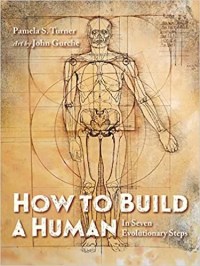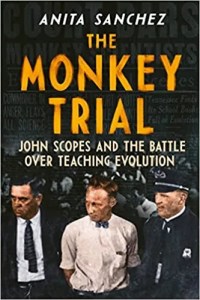
From X-rays to bombs, coverups to meltdowns, the history of radioactive elements has never been boring.

Who Split The Atom? by Anna Claybourne
Using a DK-like format, it explores the early history and research into the structure of atoms, the periodic table, radioactivity, and atomic science. Loaded with photographs, graphics, “That’s A Fact!,” “Breakthrough,” and scientific sidebars, as well as vignettes of scientists, it is an accessible and engaging introduction to radioactivity.

Atomic Universe: The Quest To Discover Radioactivity by Kate Boehm Jerome
This National Geographic book uses a running timeline across the top of the pages (from 1800 to 1971), photographs, mini biographies, and “science booster” sidebars to interest high-low readers in an introductory overview to radioactivity, atomic science, and nuclear reactors.

The Woman Who Split the Atom: The Life of Lise Meitner by Marissa Moss
Lise Meitner made groundbreaking discoveries in the study of radiation. She was the first to split the atom. But as a woman she faced many barriers, with men often taking credit for her scientific research. When Hitler came to power she had to face anti-Semitic threats as well. In addition to the science of radioactive elements, this book shows how easily women’s contributions can be erased from the history of science.

Radioactive!: How Irène Curie and Lise Meitner Revolutionized Science and Changed the World by Winifred Conkling
This gripping dual biography provides an in depth look at both the discoveries, life-long personal sacrifices, and professional struggles which Irène Curie and her husband Frédéric Joliot-Curie made in discovering artificial radiation and Lise Meitner made in discovering nuclear fission. It also touches on Marie and Pierre Curie’s discovery of natural radiation, society’s grappling with radiation, World War II, and the atomic bomb. Includes a time line, Who’s Who section, black and white photos, and fascinating sidebars further explaining the science.

Marie Curie for Kids: Her Life and Scientific Discoveries, with 21 Activities and Experiments by Amy M. O’Quinn
This book begins with Marie Curie’s childhood in Poland and takes readers through her scientific work and discoveries. Her work in radioactive elements was pivotal in creating the field of atomic physics and she added new elements to the periodic table. Curie was the first woman to win a Nobel Prize in not one, but two fields: chemistry and physics. Hands-on activities include building atomic models, a periodic table scavenger hunt, and splitting water into atoms.

The Science and Technology of Marie Curie, by Julie Knutson
Another book for Curie fans, that explores her groundbreaking research in physics and chemistry. Just as these discoveries forced scientists to rethink the structure of the world, Curie’s work forced them to rethink the role of women in science. Information boxes and sidebars are scattered throughout chapters, as are some biographies of other women in science, and there are a handful of activities to explore.

The Radium Girls: The Scary But True Story Of The Poison That Made People Glow In The Dark by Kate Moore
Equal parts medical mystery, corporate cover-up, and justice for women workers. This riveting true story about young women who used “glow-in-the-dark radium paint” on watch dials details the incredible lengths that the corporations took to evade responsibility for the women’s radium poisoning and deaths and the horrendous suffering of the girls. As well as the amazing efforts of a few doctors and lawyers determined to help these women fight back for their families and to save others and forever change workplace laws.

Bomb: The Race to Build—and Steal—the World’s Most Dangerous Weapon by Steve Sheinkin
Take one part spy thriller, one part scientific research, and a dash of political intrigue and you get an explosive mix! In this book Sheinkin traces the race from splitting the uranium atom to harnessing the power of the first atomic bomb. Section headings include titles such as “how to build a bomb” with an epilogue that discusses the fallout of the atomic arms race. The heart of the book is based on first-hand accounts by participants in the events.

In Fallout: Spies, Superbombs, and the Ultimate Cold War Showdown, Steve Sheinkin takes readers on a fast-paced and terrifying journey into the Cold War and nuclear arms race. Like Bomb, Fallout is a page-turning nonfiction – perfect for kids who love science and history.

Chien-Shiung Wu: Pioneering Nuclear Physicist by Richard Hammond
This upper-middle grade book looks at the contributions this brilliant Chinese-American nuclear physicist made to the Manhattan Project – production of radioactive uranium for the atomic bomb and improvements of radioactive detectors. As well as Wu’s later experiments which changed scientists’ understanding of physics and resulted in her election as the first female president of the American Physical Society. Includes photographs, timelines, diagrams, and extensive further resources.

The Disappearing Spoon, And Other True Tales of Rivalry, Adventure, and the History of the World from the Periodic Table of the Elements (Young Readers Edition) by Sam Kean
While this book isn’t exclusively about radioactive elements, there are plenty of stories about them – and their discoveries – to make it worth checking out. In a conversational tone, Kean talks about the periodic table, element families, and how elements are discovered. Sprinkled throughout are stories about the discovery of fission, the Manhattan Project, the “radioactive boy scout,” as well as Marie Curie and Lise Meitner.

Meltdown: Earthquake, Tsunami, and Nuclear Disaster in Fukushima by Deirdre Langeland
On March 11, 2011, the largest earthquake ever measured in Japan occurred off the northeast coast. It triggered a tsunami with a wall of water 128 feet high that ripped apart homes, schools, and damaged the nuclear power plant in Fukushima, causing a nuclear meltdown. Chapters describe the events as well as the science of nuclear reactors. Each section begins with a readout of reactor status, from “offline” to “meltdown” with the last chapter exploring lessons learned.
This month’s STEM Tuesday book list was prepared by:

Sue Heavenrich, who writes about science for children and their families on topics ranging from space to backyard ecology. Bees, flies, squirrel behavior—things she observes in her neighborhood and around her home—inspire her writing. Her most recent book is Funky Fungi (with Alisha Gabriel). Visit her at www.sueheavenrich.com

Maria Marshall, a children’s author, blogger, and poet who is passionate about making nature and reading fun for children. When not writing, critiquing, or reading, she watches birds, travels the world, bakes, and hikes. Visit her at www.mariacmarshall.com













 Callie Dean is a researcher, writer, and musician living in Shreveport, LA. She writes stories that spark curiosity and encourage kids to explore their world. Follow her on Twitter at
Callie Dean is a researcher, writer, and musician living in Shreveport, LA. She writes stories that spark curiosity and encourage kids to explore their world. Follow her on Twitter at